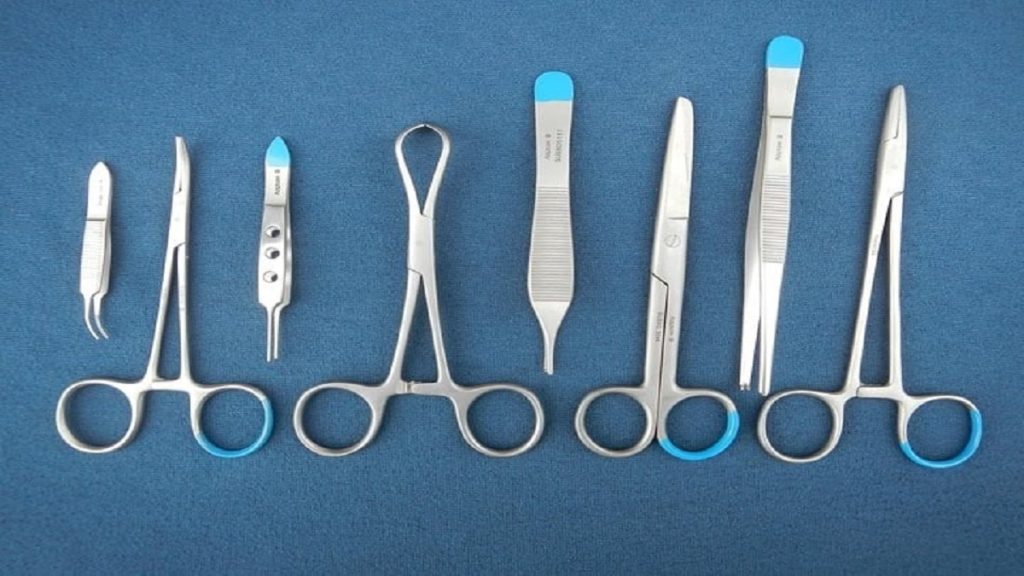
If you require hemostatic forceps in UK, going to an osteopath is not the best line of action. Osteopaths are medical practitioners with a focus on the identification and management of musculoskeletal disorders. To reduce pain and increase mobility, they move the muscles, joints, and bones of the body using hands-on methods. On the other hand, hemostatic forceps are a type of surgical tool used to manage bleeding during operations. They have nothing to do with osteopathy as a profession. If you require hemostatic forceps, you should speak with a licensed healthcare provider, such as a surgeon, who is trained to use these tools correctly and properly.
What are spatulas, suction cups, and Hemostatic Forceps in UK?
Common medical tools with various uses in medical operations include spatulas, suction cups, and Hemostatic Forceps in UK.
Forceps for hemostasis:
The surgical tool known as a hemostat, or hemostatic forceps in UK, is used to clamp blood vessels or tissue to halt bleeding during operations. They can be straight or curved, and they come in a variety of sizes and forms.
Vacuum Cups:
Surgical sites and wounds can be cleaned of fluids and debris using suction cups. They function by producing a hoover that removes liquids and dirt from the vicinity.
Spatulas:
Medical tools called spatulas have flat, thin, and frequently flexible blades. While applying wound dressings or other medical treatments, they are used to distribute ointments, lotions, or other things across a surface.
Each of these tools has a distinct purpose in medical processes and is intended to make the work of medical professionals more successful and efficient.
What effects may a delivery with hemostatic forceps have?
In surgical operations, hemostatic forceps in UK are frequently employed to clamp tissue or blood arteries to halt bleeding. Although the use of this equipment is necessary for many medical operations, there are occasionally unintended repercussions. The hazards and issues that might arise from using hemostatic forceps delivery are covered in this article.
First off, it’s crucial to remember that the delivery of hemostatic forceps is normally carried out by trained medical experts, like surgeons or nurses, who have received instructions on how to use these tools properly. Yet, difficulties might still happen even in the hands of skilled experts.
Tissue injury is one possible side effect of hemostatic forceps:
Tissue injury is one possible side effect of hemostatic forceps delivery. Hemostats can damage tissue if they are used too long or too firmly. This may cause tissue rupture, necrosis, or even ischemia. This tissue injury occasionally causes delayed wound healing or the development of scar tissue. Nerve injury is another potential side effect of hemostatic forceps delivery. Hemostats can exert pressure on nerves, resulting in either short-term or long-term harm. Symptoms of nerve injury might include numbness, tingling, weakness, or lack of feeling.
Hemostatic forceps in UK delivery can cause infection as well as harm to tissue and nerves. The hemostats might introduce bacteria into the surgical site if they are not thoroughly sanitized. This may result in infection, which is a potentially significant side effect, especially in people with compromised immune systems.
Retained foreign bodies are another possible side effect:
Also, if the tool is not placed correctly or if it is taken out too soon, hemostatic forceps delivery might result in severe bleeding. As a result, the procedure may take longer and the patient may have more difficulties.
Retained foreign bodies are another possible side effect of hemostatic forceps in UK delivery. Hemostats may inadvertently remain inside a patient’s body following an operation in specific circumstances. Serious side effects like infection, organ damage, or even death might result from this. Medical workers must adhere to adequate sterilizing measures, apply the tool precisely, and remove it promptly to reduce the hazards connected with hemostatic forceps delivery. Patients should also be closely watched for any indications of problems, including severe bleeding, tissue damage, or infection.
In summary
In conclusion, even though hemostatic forceps are a crucial tool in many surgical operations, the way they are delivered occasionally has unfavorable effects. These side effects include the possibility of retained foreign bodies, infection, tissue damage, nerve damage, and excessive bleeding. It is crucial for medical practitioners to use this equipment accurately and carefully, and to regularly monitor patients for any indications of difficulties, to reduce these dangers.
